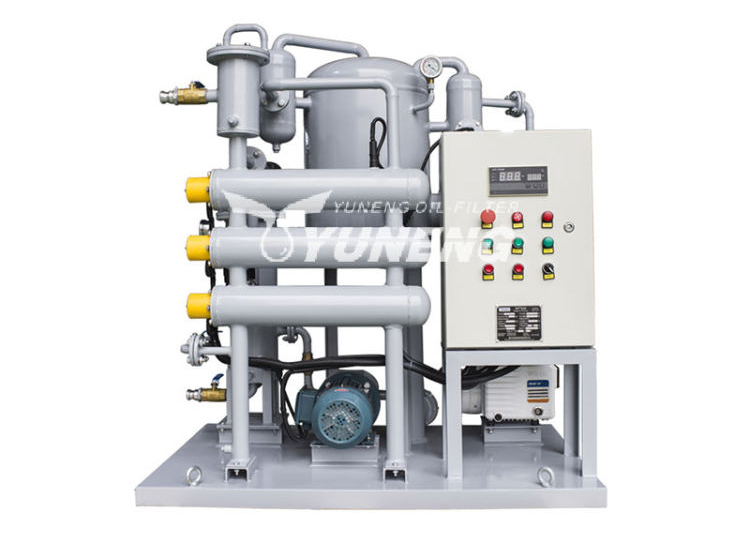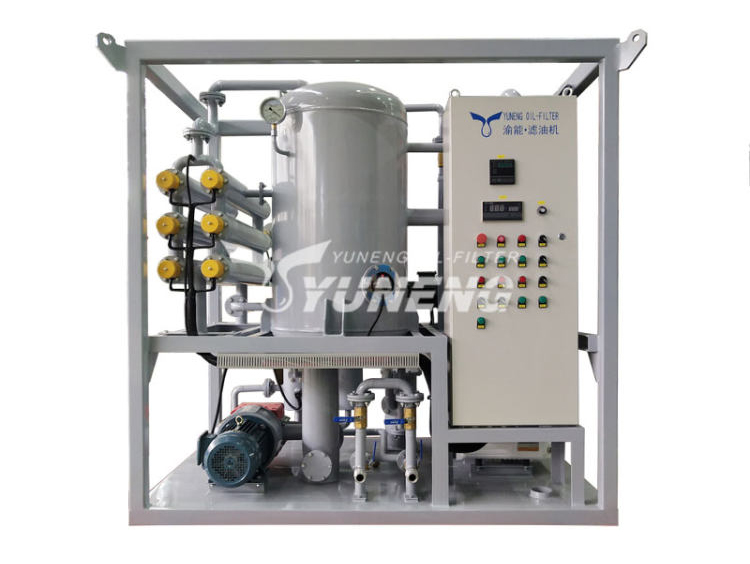The Use of Transformer Oil Purifier and the Function of Its Main Components
The transformer oil purifier includes a primary purification machine, an oil pump, a vacuum evaporation tank, and a filter device. The impure oil enters the vacuum evaporation tank through the prefilter after the action of atmospheric pressure. After the oil is heated and sprayed into the vacuum chamber, it can become fine oil droplets. The moisture in the oil can quickly evaporate into water vapor, which is then discharged. But do you know the function of each part of the oil purification machine? This article will take you through the function of each component.
1. Selection of Oil Pump
Determination of the type of oil pump: The commonly used oil pumps can be divided into three types: gear pump, vane pump and plunger pump according to their structure. Gear pumps are used in low-pressure systems and are not sensitive to oil pollution; vane pumps have uniform output flow, small pulsation, and low noise, but their oil absorption characteristics are not very good and are sensitive to oil pollution; plunger pumps are easy to obtain high-precision coordination and leakage. Small size, high volumetric efficiency, commonly used in high-pressure systems with vane pumps, and sensitive to oil contamination. Therefore, the vacuum oil purifier chooses the gear pump as the oil inlet and outlet pumps.
Determination of the working pressure of the oil pump: In order to improve the reliability of the system and prolong the service life of the pump, the normal working pressure of the oil pump in the general vacuum oil purifier is 70~80% of the rated pressure of the pump. Since the system works under negative pressure and there are no actuators such as hydraulic cylinders and hydraulic motors, the working pressure of the oil pump should not be higher than 0.5MPa.
Determination of the working flow of the oil pump: the flow of the oil pump must be greater than the maximum flow when the system is working.
Determination of the motor power of the oil pump: Generally, the working parameters of the pump should be in the high-efficiency region of the efficiency curve of the pump, usually calculated as 0.8. Considering that the motor generally allows a short-term overload of 25%, the motor power can be determined under other working conditions.

2. Selection of Heater
The oil temperature for normal operation is below 80℃, and the vacuum degree is determined to be 0.06MPa based on the relationship between saturated vapor pressure and temperature. At this time, the evaporation temperature of water is 70℃, and the oil can maintain its performance. . Therefore, the oil needs to be heated to 60~70℃. For high altitude areas, the heating temperature needs to be appropriately increased due to the lower vacuum degree. The heating power determines the rate of oil purification and regeneration. If the power is too small, the heating time will increase, which will reduce the purification efficiency; if the power is too large, the cost will increase and the installation will be difficult. Since the oil is a poor conductor of heat, the power capacity of a single heater cannot be too large to avoid the deterioration of the oil around it due to excessive heating. Therefore, it is very important to choose a heater with appropriate power.
3. Design and Verification of Vacuum Equipment
Design of vacuum tank: The water evaporated in the vacuum tank exists in the form of tiny bubbles. When the temperature and vacuum conditions are satisfied, the evaporation process is
carried out on the surface and inside of the liquid at the same time. The gas escaping from the liquid surface is taken away by the vacuum pump, and the air bubbles that are not escaping are mixed in the oil and are brought back to the oil tank by the oil discharge pump. Under normal pressure, part of the water vapor is re-condensed into water and mixed in the oil system. Therefore, the nominal flow of the oil purifier is the main parameter of the whole design, and the structure can be either vertical or horizontal. Practice has proved that the volume of the vacuum tank should be 3-5 times the nominal flow of the oil purifier. The strength calculation of the vacuum tank includes the calculation and verification of the plate pressure of the cylinder, the wall thickness of the cylinder and the head.
Selection of vacuum pump: The selection of vacuum pump is mainly based on the total amount of gas that the pump needs to pump out. Since the pumping rate of the vacuum pump determines the vacuum degree of the vacuum tank, the selection should also consider that the pumping rate should be greater than or equal to the displacement of the oil discharge pump. 1-2 times; and can ensure that the gas pressure of the tank and pipeline is pumped to 0.06MPa or lower within 1-2min.
4. Selection of Condenser
The condenser is installed after the vacuum tank, and the common structure is air-cooled. The structure is simple and the price is low, but the cooling effect is worse than that of the water-cooled type. The condenser is to ensure that the water vapor and light oil extracted by the vacuum pump can be condensed into liquid. The main parameter for selecting the condenser is the heat dissipation area.

5. Selection of Purification Machines
Classification of purification machines: The filtration accuracy of purification machines is represented by the particle size of impurities, which can generally be divided into four types: coarse purification machines, ordinary purification machines, fine purification machines and ultra-fine purification machines: Larger than 100μm is a coarse purification machine, 10-100μm is an ordinary purification machine, 5-10μm is a fine purification machine, and 1-5μm is an ultra-fine purification machine. The choice of the filtration precision of the oil purification machine is mainly affected by two factors.
6. Under the Premise of Ensuring the Accuracy When Selecting the Purification Machine, the Larger the Oil Passing Capacity, the Better.
The main considerations are as follows:
- It has sufficient oil-passing ability and small pressure loss;
- The filtration precision meets the requirements;
- The filter element has sufficient strength;
- The filter element has good corrosion resistance and can work for a long time at the specified temperature;
- The filter element is easy to replace, clean and maintain.
If you are still being bothered by lube oil mixing issues, you’d better use a lube oil blending machine, it can solve much trouble during work, China Oil Purifier is one of the most professional oil purifier manufacturers in China, if you are looking for oil issues assistance, please do contact us for help.


